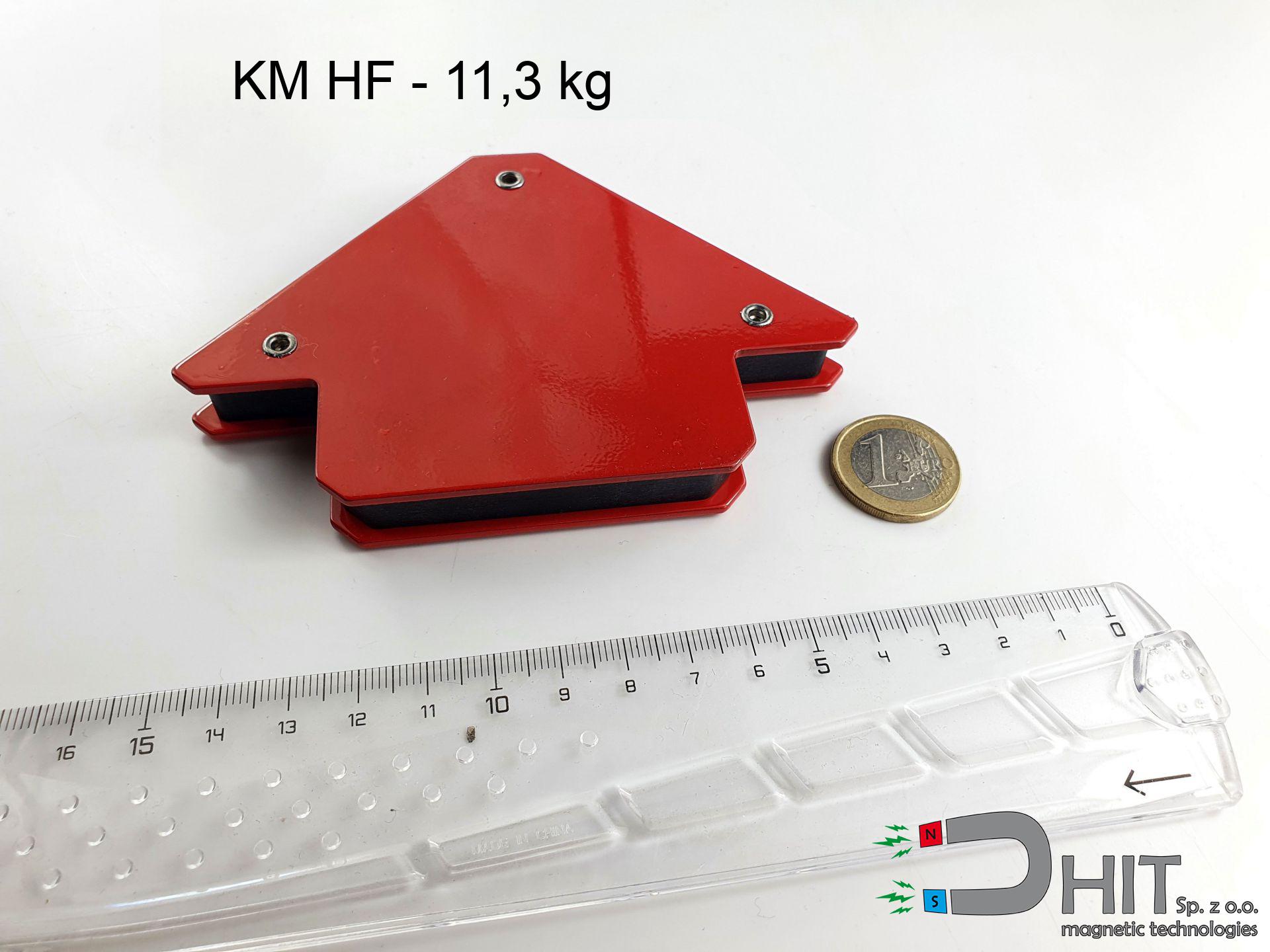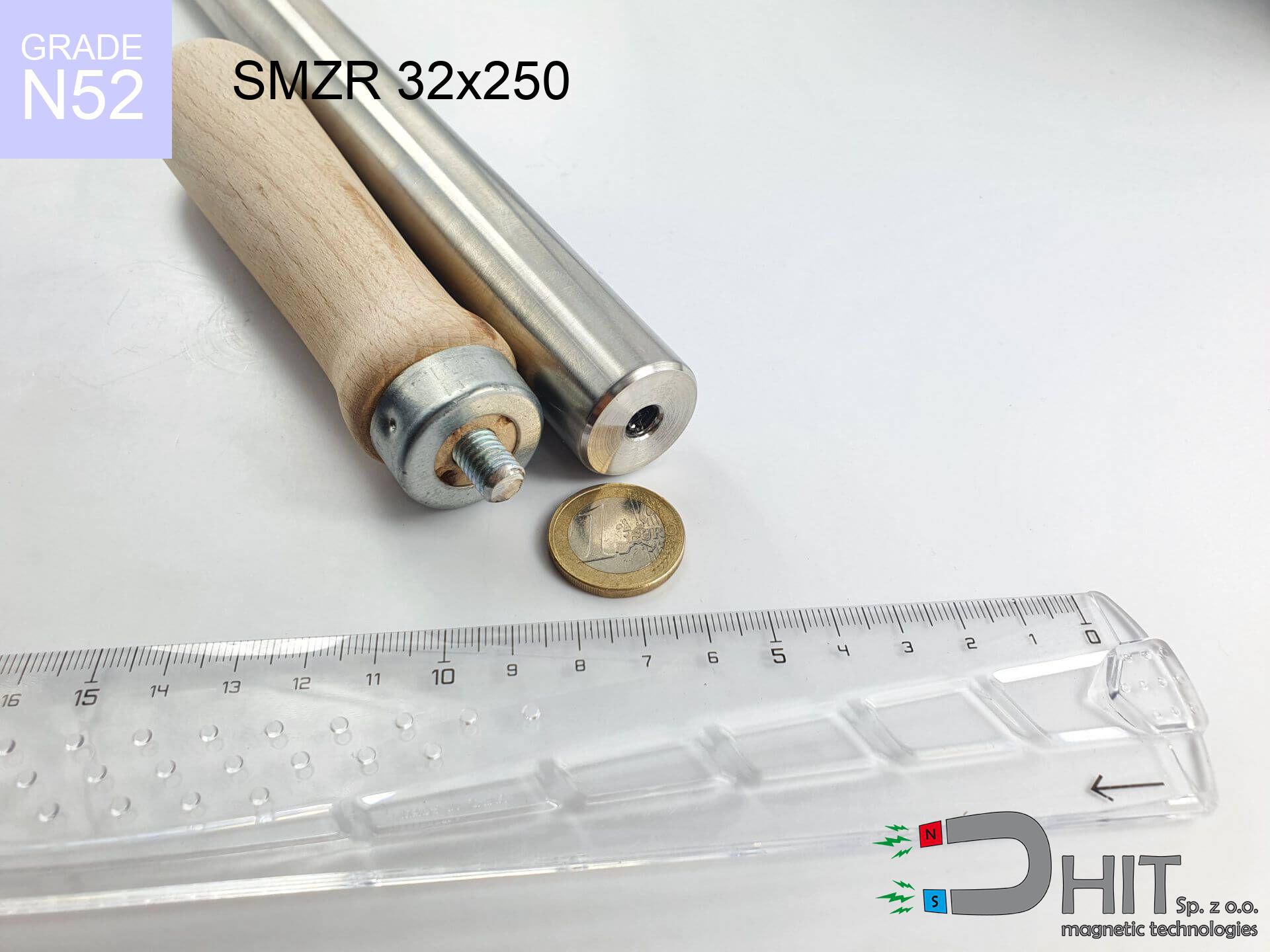SM 18x250 [2xM5] / N42 - magnetic separator
magnetic separator
Catalog no 130275
GTIN/EAN: 5906301812777
Diameter Ø
18 mm [±1 mm]
Height
250 mm [±1 mm]
Weight
0.01 g
Magnetic Flux
~ 5 400 Gauss [±5%]
553.50 ZŁ with VAT / pcs + price for transport
450.00 ZŁ net + 23% VAT / pcs
bulk discounts:
Need more?
Call us now
+48 22 499 98 98
alternatively send us a note via
request form
our website.
Specifications as well as structure of magnets can be checked on our
magnetic mass calculator.
Order by 14:00 and we’ll ship today!
Technical - SM 18x250 [2xM5] / N42 - magnetic separator
Specification / characteristics - SM 18x250 [2xM5] / N42 - magnetic separator
| properties | values |
|---|---|
| Cat. no. | 130275 |
| GTIN/EAN | 5906301812777 |
| Production/Distribution | Dhit sp. z o.o. |
| Country of origin | Poland / China / Germany |
| Customs code | 85059029 |
| Diameter Ø | 18 mm [±1 mm] |
| Height | 250 mm [±1 mm] |
| Weight | 0.01 g |
| Material Type | Stainless steel AISI 304 / A2 |
| Magnetic Flux | ~ 5 400 Gauss [±5%] |
| Size/Mount Quantity | 2xM5 |
| Polarity | circumferential - 11 poles |
| Casing Tube Thickness | 1 mm |
| Manufacturing Tolerance | ±1 mm |
Magnetic properties of material N42
| properties | values | units |
|---|---|---|
| remenance Br [min. - max.] ? | 12.9-13.2 | kGs |
| remenance Br [min. - max.] ? | 1290-1320 | mT |
| coercivity bHc ? | 10.8-12.0 | kOe |
| coercivity bHc ? | 860-955 | kA/m |
| actual internal force iHc | ≥ 12 | kOe |
| actual internal force iHc | ≥ 955 | kA/m |
| energy density [min. - max.] ? | 40-42 | BH max MGOe |
| energy density [min. - max.] ? | 318-334 | BH max KJ/m |
| max. temperature ? | ≤ 80 | °C |
Physical properties of sintered neodymium magnets Nd2Fe14B at 20°C
| properties | values | units |
|---|---|---|
| Vickers hardness | ≥550 | Hv |
| Density | ≥7.4 | g/cm3 |
| Curie Temperature TC | 312 - 380 | °C |
| Curie Temperature TF | 593 - 716 | °F |
| Specific resistance | 150 | μΩ⋅cm |
| Bending strength | 250 | MPa |
| Compressive strength | 1000~1100 | MPa |
| Thermal expansion parallel (∥) to orientation (M) | (3-4) x 10-6 | °C-1 |
| Thermal expansion perpendicular (⊥) to orientation (M) | -(1-3) x 10-6 | °C-1 |
| Young's modulus | 1.7 x 104 | kg/mm² |
Table 1: Rod construction
SM 18x250 [2xM5] / N42
| Parameter | Value | Description / Unit |
|---|---|---|
| Diameter (Ø) | 18 | mm |
| Total length | 250 | mm (L) |
| Active length | 214 | mm |
| Section count | 9 | modules |
| Dead zone | 36 | mm (2x 18mm starter) |
| Weight (est.) | ~483 | g |
| Active area | 121 | cm² (Area) |
| Housing material | AISI 304 | 1.4301 (Inox) |
| Surface finish | Ra < 0.8 µm | Polished |
| Temp. class | 80°C | Standard (N) |
| Force loss (at max °C) | -12.8% | Reversible loss (physics) |
| Force (calculated) | 5.5 | kg (theor.) |
| Induction (surface) | ~6 500 | Gauss (Max) |
Chart 2: Field profile (9 sections)
Chart 3: Temperature performance
Chemical composition
| iron (Fe) | 64% – 68% |
| neodymium (Nd) | 29% – 32% |
| boron (B) | 1.1% – 1.2% |
| dysprosium (Dy) | 0.5% – 2.0% |
| coating (Ni-Cu-Ni) | < 0.05% |
Sustainability
| recyclability (EoL) | 100% |
| recycled raw materials | ~10% (pre-cons) |
| carbon footprint | low / zredukowany |
| waste code (EWC) | 16 02 16 |
Other products
Advantages and disadvantages of rare earth magnets.
Benefits
- Their power remains stable, and after approximately 10 years it drops only by ~1% (according to research),
- They possess excellent resistance to magnetic field loss as a result of external magnetic sources,
- The use of an aesthetic finish of noble metals (nickel, gold, silver) causes the element to present itself better,
- Magnetic induction on the top side of the magnet remains exceptional,
- Neodymium magnets are characterized by extremely high magnetic induction on the magnet surface and can work (depending on the form) even at a temperature of 230°C or more...
- Thanks to freedom in shaping and the capacity to customize to unusual requirements,
- Significant place in modern technologies – they find application in hard drives, electromotive mechanisms, advanced medical instruments, also modern systems.
- Compactness – despite small sizes they generate large force, making them ideal for precision applications
Disadvantages
- At very strong impacts they can crack, therefore we recommend placing them in steel cases. A metal housing provides additional protection against damage and increases the magnet's durability.
- Neodymium magnets lose power when exposed to high temperatures. After reaching 80°C, many of them experience permanent weakening of strength (a factor is the shape and dimensions of the magnet). We offer magnets specially adapted to work at temperatures up to 230°C marked [AH], which are extremely resistant to heat
- Magnets exposed to a humid environment can rust. Therefore when using outdoors, we suggest using water-impermeable magnets made of rubber, plastic or other material protecting against moisture
- Limited ability of producing threads in the magnet and complicated shapes - preferred is casing - magnetic holder.
- Possible danger to health – tiny shards of magnets can be dangerous, when accidentally swallowed, which gains importance in the context of child health protection. It is also worth noting that small components of these products can disrupt the diagnostic process medical when they are in the body.
- Due to expensive raw materials, their price exceeds standard values,
Holding force characteristics
Maximum lifting force for a neodymium magnet – what contributes to it?
- using a plate made of high-permeability steel, serving as a magnetic yoke
- whose thickness reaches at least 10 mm
- with a surface perfectly flat
- under conditions of gap-free contact (metal-to-metal)
- during detachment in a direction perpendicular to the plane
- at room temperature
Magnet lifting force in use – key factors
- Gap between magnet and steel – every millimeter of distance (caused e.g. by veneer or dirt) drastically reduces the pulling force, often by half at just 0.5 mm.
- Angle of force application – highest force is available only during perpendicular pulling. The shear force of the magnet along the plate is typically many times smaller (approx. 1/5 of the lifting capacity).
- Base massiveness – too thin steel does not close the flux, causing part of the flux to be wasted into the air.
- Plate material – mild steel gives the best results. Higher carbon content decrease magnetic properties and holding force.
- Smoothness – ideal contact is obtained only on polished steel. Any scratches and bumps create air cushions, weakening the magnet.
- Thermal environment – heating the magnet results in weakening of force. It is worth remembering the maximum operating temperature for a given model.
Holding force was measured on the plate surface of 20 mm thickness, when the force acted perpendicularly, however under shearing force the holding force is lower. Additionally, even a slight gap between the magnet and the plate lowers the load capacity.
Safe handling of neodymium magnets
Magnet fragility
Neodymium magnets are ceramic materials, which means they are fragile like glass. Impact of two magnets leads to them shattering into small pieces.
Cards and drives
Powerful magnetic fields can destroy records on credit cards, hard drives, and storage devices. Maintain a gap of at least 10 cm.
Allergy Warning
It is widely known that nickel (the usual finish) is a common allergen. For allergy sufferers, refrain from touching magnets with bare hands and opt for encased magnets.
Impact on smartphones
GPS units and mobile phones are extremely sensitive to magnetism. Direct contact with a powerful NdFeB magnet can permanently damage the sensors in your phone.
Conscious usage
Handle magnets consciously. Their powerful strength can shock even experienced users. Be vigilant and do not underestimate their power.
Choking Hazard
NdFeB magnets are not intended for children. Swallowing multiple magnets may result in them connecting inside the digestive tract, which constitutes a critical condition and necessitates urgent medical intervention.
Dust is flammable
Powder produced during grinding of magnets is combustible. Do not drill into magnets without proper cooling and knowledge.
Bone fractures
Danger of trauma: The attraction force is so immense that it can cause blood blisters, pinching, and broken bones. Protective gloves are recommended.
Warning for heart patients
Patients with a ICD have to keep an absolute distance from magnets. The magnetism can disrupt the functioning of the life-saving device.
Do not overheat magnets
Avoid heat. Neodymium magnets are susceptible to temperature. If you need operation above 80°C, look for HT versions (H, SH, UH).

![Magnetic bar SM 18x250 [2xM5] / N42 Magnetic bar SM 18x250 [2xM5] / N42](https://cdn3.dhit.pl/graphics/banners/magnet.webp)
![SM 18x250 [2xM5] / N42 - magnetic separator](https://cdn3.dhit.pl/graphics/products/sm-18x250-2xm5-raz.jpg)
![UMGGW 22x6 [M4] GW / N38 - magnetic holder rubber internal thread UMGGW 22x6 [M4] GW / N38 - magnetic holder rubber internal thread](https://cdn3.dhit.pl/graphics/products/umg-22x6-m4-gw-jek.jpg)




